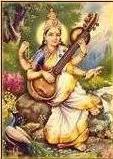
|

|
IntroductionAn ardent lover of Indian Classical Music, especially Karnatic music, I spend a lot of time in listening to recorded music or attending concerts of many stalwarts in music. My appreciation of Karnatic music acquired depth after I began attending to the meaning of the texts. The fervor with which “Pancha Ratna Keertanas” are sung and enjoyed by many rasikas during “Tyagaraja Aradhana” is admirable. Of course, any music concert can be enjoyed if the artists delineate the nuances of a “raga” well, and if swaraprastaram, laya, etc. are good. But definitely internalising the literary genius and spiritual preachings of Tyagaraja, Annamacharya or any other great composer, enhances the involvement of the singer and listener spiritually and emotionally. This aspect prompted me to translate Keertanas of Tyagaraja, Annamacharya, Ramadasu and other composers into English and provide short notes to them. As you know English has become a popular medium to comprehend Indian spiritual literature and classical arts like music and dance. Annamacharya’s immortal songs written six centuries ago contain innumerable Telugu words and idioms which have undergone semantic changes and some are not currently in usage. These are colloquial, rural and ritualistic words and I found it very difficult to find their equivalents in modern Telugu and more so in English due to radical differences in idiom. In such cases, I tried my best to convey the overall meaning. I found that most translations of these Keertanas contained only brief notes and so I translated line by line where ever possible so that the singers do not miss the meaning of the words used by the composers. Most of the characters, incidents and stories in the Keertanas are from Ramayana, Maha Bharata and the other epics familiar to us. Details about these stories may be taken from other sources. Sri Kalluri Veera Bhadra Sastry’s detailed explanation in his Telugu book “Tyagaraja Keertanalu: Visesha Vivaranamu” helped me immensely to know the content and the background of the krutis of Tyagaraja. I sincerely pay homage to that great philosopher and scholar. My daughter Santa Dasu(Kondapalli) has been reviewing the content and serving as the web master. I whole heartedly appreciate her initiative. Information regarding epics is readily furnished by my wife Vimala from her memory, for which I am thankful to her. I hope my humble endeavor makes listening and singing of the timeless krutis of those immortal composers more wholesome. Obviously no translation can be perfect and I can only say that I tried my best to approximate it to the original but not to equal. I request the lovers of music and especially the learners to make use of this work and give their valuable suggestions.
|